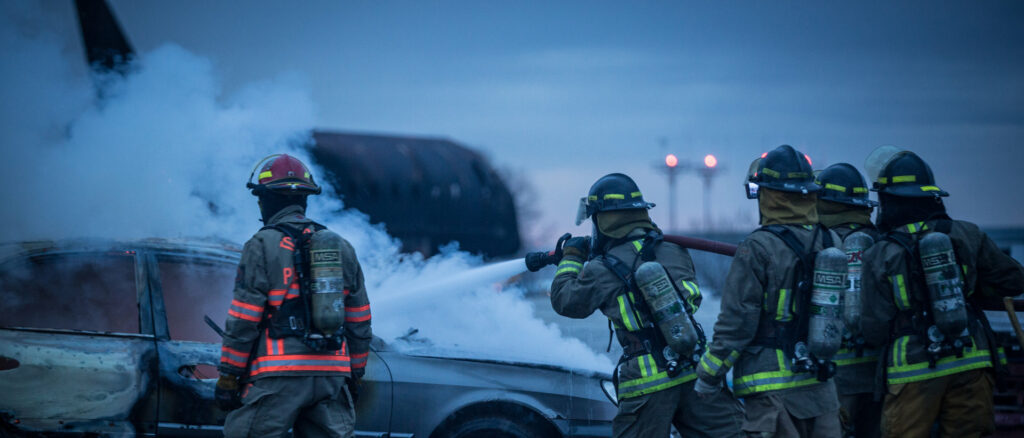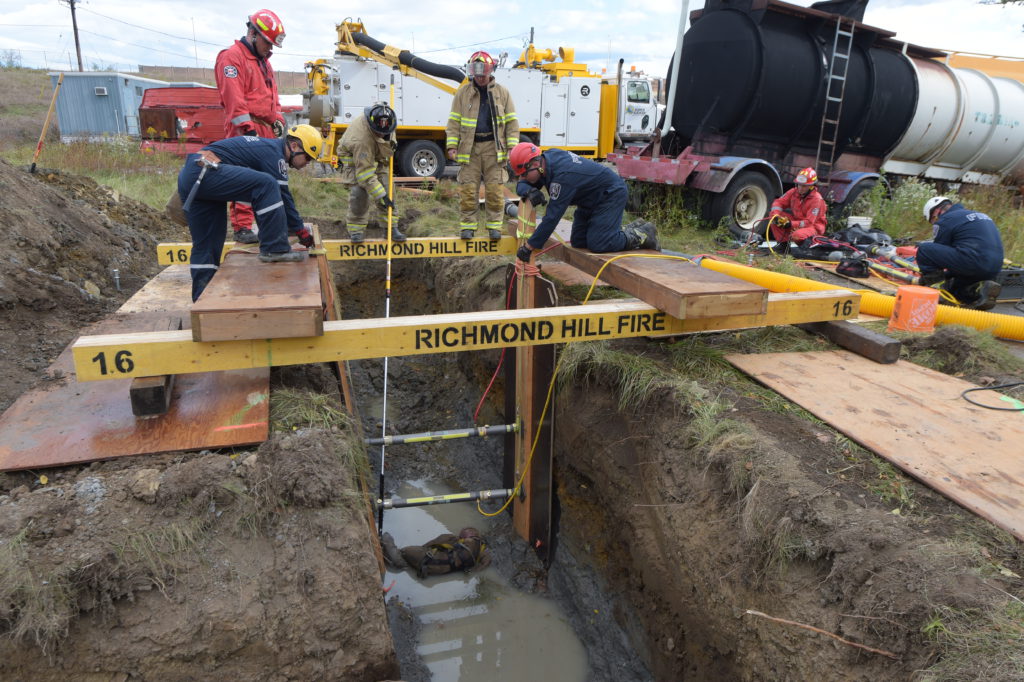Why Fire Extinguisher Training Is Important to Comply with OSHA Regulations
Estimated reading time: 5 minutes

Practical fire extinguisher training is essential to save lives in any type of fire scenario. Most homeowners and all workplaces have one or more types of fire extinguishers strategically located throughout their homes/properties. Knowing how to properly use one in an emergency situation is a valuable life lesson.
Most people are familiar with the portable fire extinguisher and how to use one—the acronym PASS is helpful to remember (pull pin, aim low, squeeze lever slowly, sweep side-to-side). But knowing when to use a fire extinguisher and the type of fire a fire extinguisher is designed for is also important.
The Occupational Safety and Health Administration (OSHA) mandates that all employers provide operational fire extinguishers within their place of business. Furthermore, OSHA has also published a list of regulations to ensure the safety, health, and well-being of the general public when it comes to using fire extinguishers.
OSHA Regulations About Fire Extinguisher Training
- Employees must be trained in use of fire extinguishers when first hired and once a year thereafter.
- Fire extinguishers are to be identified with above signage indicating location.
- Fire extinguishers must be accessible without obstructions.
- All fire extinguishers must be OSHA-approved.
- Fire extinguishers must be charged, operational, and in their designated place when not in use.
- Fire extinguishers cannot contain carbon tetrachloride or chlorobromomethane.
- Fire extinguishers must be mounted on brackets or in wall cabinets with the carrying handle placed 3-1/2 to 5 feet above the floor.
- Fire extinguishers require a monthly visual inspection of all portable extinguishers.
- Mandatory annual inspections and periodic maintenance inspections must be documented for all fire extinguishers.
- Employees are prohibited from handling portable fire extinguishers unless trained.
Who Should Get Fire Extinguisher Training?
To comply with OSHA regulations regarding fire extinguisher use, all employees within an organization—regardless of their position or type of employment—should be trained on how to properly use a fire extinguisher. This training should include educating employees on which type of extinguisher to use for specific fires and how to operate the device safely and effectively.
Do Firefighters Also Need Fire Extinguisher Training?
Part of regular firefighter training involves proper management and use of all types of fire extinguishers. Each and every fire truck has standardized fire extinguishers. Having this knowledge and experience allows firefighters to effectively educate the general public or the community on how to properly use a fire extinguisher.
What Are the Different Fire Classifications?
Fires are classified based on the type of fuel and material within the combustion. Each type is assigned a classification letter.
- Class A fires refer to the basic combustibles of paper, wood, cloth, plastics, and rubber.
- Class B fires involve flammable and combustible liquids, tar, oils, petroleum greases, solvents, lacquers, oil-based paints, flammable gases, and alcohols.
- Class C fires are those of electrical equipment nature.
- Class D fires include combustible metals of titanium, sodium, lithium, magnesium, potassium, and zirconium.
- Class K fires are common kitchen appliance-related fires with combustible cooking matters such as vegetable and animal oils and fats.
What Is the Difference Between a Portable vs. a Wheeled Fire Extinguisher?
|
FEATURES |
PORTABLE EXTINGUISHERS |
WHEELED EXTINGUISHERS |
|
Size and Weight |
Smaller, lightweight and compact |
Large, bulky and heavy |
|
Fire Suppression Capability |
Limited suppression capacity for small fires |
High suppression capacity for large fires |
|
Fire Class |
Class A, B, and C fires |
Class A, B, C, D and K fires |
|
Suitable For |
Offices and homes |
Industrial facilities, warehouses, and commercial buildings |
|
Types |
Water, foam, wet chemical, dry chemical powder, vaporizing liquid, carbon dioxide | Carbon dioxide, dry chemical, halons, dry powder, AFFF-type foam pre-mix solutions |
|
Management |
One person |
Multiple persons |
FESTI’s Fire Extinguisher Training Programs
The Fire and Emergency Services Training Institute (FESTI) is a world-class college offering certification programs and courses to emergency personnel and corporate members. We have two accredited fire extinguisher training certificate courses.
Portable Fire Extinguisher Training
Our Portable Fire Extinguisher training program teaches the science behind fire ignitions, the various classes of fires, and proper extinguishing techniques for a successful outcome. With videos and live fire scenarios, students will gain the knowledge and confidence to react in a safe and effective method.
Wheeled Unit Fire Extinguisher Training
Our Wheeled Unit Fire Extinguisher training program is designed for those working in industries that involve use of large fuel loads. The introductory material of Portable Fire extinguisher training program is included in this course.
Get Fire Extinguisher Training Today to Protect Your Workplace and Employees
As a private career college, FESTI provides the highest standards of certification and education for all emergency response personnel. Our location at Canada’s largest airport of Toronto Pearson International Airport allows our students to immerse in training with the members of the airport’s fully operational fire service.
Contact us here with any questions, concerns, or for more information on our variety of programs, including our onsite fire extinguisher training.
Recent Posts
- How to Comply with the Ontario Fire Code
- Mastering the Maze: Navigating Complex Industrial Firefighting Scenarios
- From Flames to Rescue: Exploring the Challenges Faced by Aircraft Firefighters
- How to Become a Fire Inspector in Canada
- Why Fire Extinguisher Training Is Important to Comply with OSHA Regulations


